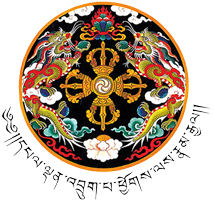Chendebji Chorten
Chendebji Chorten is a significant religious monument located in the central part of Bhutan, in Trongsa District, along the highway between Wangdue Phodrang and Trongsa. It is a popular stop for both travelers and pilgrims due to its historical and spiritual importance.
Historical Background:
Built in the 18th century: The Chorten was constructed in the 18th century, during the time of Lama Shida (also known as Lam Oensey Tshering Wangchuk). He was a Buddhist master from Tibet.
Modeled after Boudhanath Stupa: Chendebji Chorten is believed to be modeled after the Boudhanath Stupa in Kathmandu, Nepal, reflecting the close historical and religious ties between Bhutan and Nepal/Tibet.
Purpose: The chorten was built to subdue evil spirits that were believed to inhabit the area. According to legend, it was constructed on the spot where the head of a powerful demon was buried after being subdued.
Design: It is a Nepali-style stupa, whitewashed with a golden spire, and features eyes painted on all four sides, symbolizing the all-seeing eyes of the Buddha. This architectural style is rare in Bhutan, making the Chendebji Chorten unique.
Cultural and Religious Significance:
Pilgrimage site: Chendebji Chorten remains an important religious site for Bhutanese Buddhists. Pilgrims often stop here to offer prayers and circumambulate the stupa.
Annual festival: The Chendebji Tshechu, a religious festival, is held here annually and includes mask dances and rituals that attract locals and visitors.
Spiritual protection: The Chorten is believed to ward off negative energies along the vital travel route it overlooks.
Contact us
- Trongsa Dzongkhag Administration , Bhutan
- Dzong Post Box No: 1056
- Tel: +975 03 521148
- E-Mail: dzongkhag@trongsa.gov.bt
